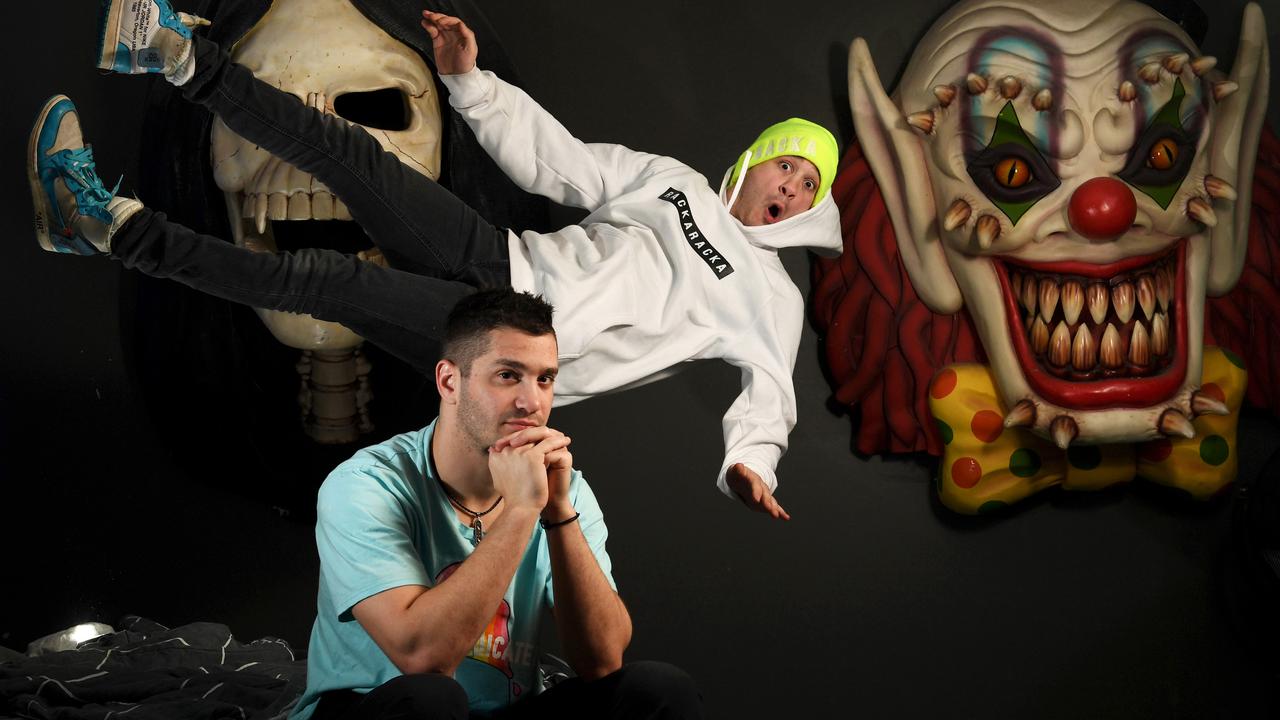Dead pet society: how crematoriums are keeping memories of our pets alive
THEY’RE a part of the family and give their owners good company, loyalty and love. Little wonder that when our pets die we’re increasingly prepared to spend big to honour their memory.
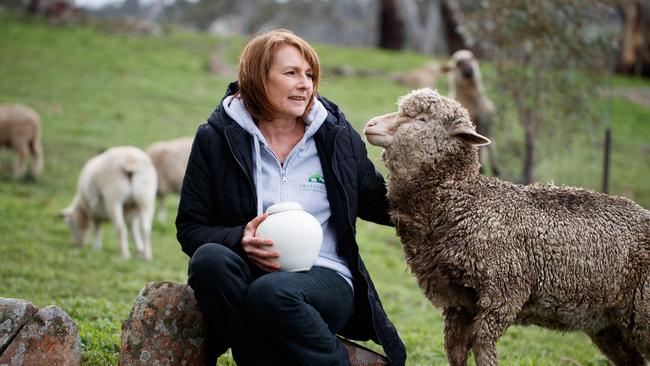
SA Weekend
Don't miss out on the headlines from SA Weekend. Followed categories will be added to My News.
MATEY arrived at Freedom Hill Sanctuary in the Adelaide Hills as a sickly lamb. He needed around-the-clock care from owners Kym Henley and her family until he was healthy enough to leave the house.
Maybe it was a special bond, or maybe his personality, but Matey was a sheep that sought plenty of affection.
“If we were busy, he would scratch us at the back of our legs for us to pat him. If we had a rake in our hands he would headbutt it out of the way to get our attention” says Henley.
Matey survived his rescue only to be killed by a snake at 14 months old. Henley was devastated. She wanted him cremated to keep his ashes. But how do you cremate a 70kg sheep? No-one really knew, but Angel Ashes, an Adelaide-based pet cremation and memorial service, made it happen.
“Matey is still with us in our dining room,” says Henley. “We’ve got him in an urn, the biggest we could get, and we’ve got another part of him in a bag from which we scattered some of his ashes at the top of Freedom Hill at our own little ceremony for him.
“My granddaughter still asks to go and visit Matey and take flowers up there. I also have some of his ashes in a heart that is attached to a bracelet so he will always be with me.”
There is no doubt Australians love their pets. A 2013 report for the Animal Health Alliance of Australia (now known as Animal Medicines Australia) found 90 per cent of owners considered their pet to be a part of their family and they are treated that way.
In fact, for a growing number of us, pets are the family. A recent survey found two out of five pet owners who are single and childless believe the animals substitute for a life partner or children. And more Australians live with pets than children, according to a Roy Morgan report.
So when our pets die it is not surprising that we are increasingly prepared to spend big to commemorate their lives, whether it be with a simple urn, a plaque, a tattoo of their paw print, an oil painting, or even embedded into a piece of jewellery.

Once the family pet would have been buried out back, but thanks to smaller backyards and council by-laws this is becoming less popular. The growing trend is for cremation.
For owners like Henley, who want to keep more than just a memory, private cremations allow the ashes to be returned for scattering somewhere meaningful or kept in a permanent urn.
The Animal Welfare League, which has operated Adelaide’s only pet crematorium for the past 20 years, has seen a big change in our treatment of our dead pets.
Sabine Kloss, the marketing manager for AWL, says the number of cremations AWL performs has increased by about 20 per cent in the past five years. About half of all cremations are now private. The rest are communal.
There are two pet crematoriums in regional South Australia – Paws to Reflect in Victor Harbor and Peternity in the Port Lincoln area. Angel Ashes, based in Adelaide, offers a personalized service of collection and delivery of individual pets direct to the client. It currently uses the crematorium in Victor Harbor to perform its private cremations. Due to increased demand, Angel Ashes has recently applied to operate its own pet crematorium in the Adelaide area, intending to reach more pet owners seeking individual cremations.
Angel Ashes undertakes an average of 25-30 private cremations a month. Jason Salter of Angel Ashes says he would be surprised if that figure didn’t rise to 100 a month once their crematorium is in operation.
“In the past 12 months, our monthly turnover has doubled. Once we open our new facility we expect it to triple but I can see it is likely to quadruple and potentially turn into a multi-million dollar turnover,” says Salter.
The cost of a private cremation will depend on the size of the animal but the average is around $300 with a complimentary urn. The services based in SA, as well as many online sites, offer a range of memorials.
As well as the urn, pet owners can get a plaque, a paw print in clay, a piece of jewellery containing some of the animal’s ashes or fur, a sculpture, a personalised photo frame or other homewares, portrait photography or a painting.
SOME people even seek an ink impression of the paw of their pet for a tattoo. The list is endless. Many people choose a few different memorials to remember one pet. Most will spend from $300-$800.
Product ranges are increasing in both variety and exclusivity. Angel Ashes has just released a new range of diamond products created in Switzerland from the carbon of the ash, coat or plumage of the pet, costing around $6000 and there is an even more exclusive range at much higher prices again, for the customer looking for that special something.
“You can say the sky is the limit in terms of what people spend and if that’s what they need to do to get over their grief and their loss then we provide support to help them find that thing even if we don’t have it,” says Kloss of AWL.
Michael Packer is a gyprocker from Happy Valley. His snake Scooby, a 2m-long carpet python, was with him for 20 years. When Scooby died last November, he felt the loss just as he would a family member. Even though his wife is not a snake lover, she grew accustomed to Scooby and felt the loss keenly, too.
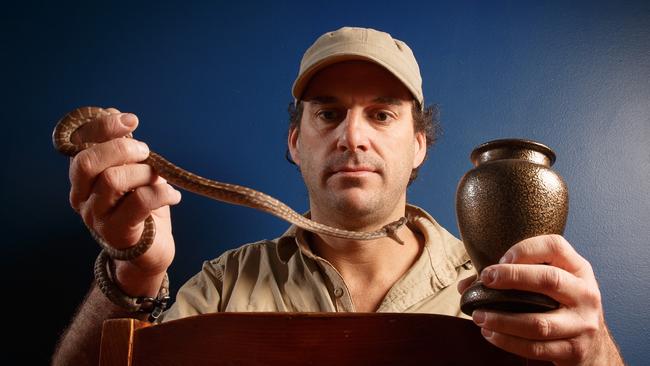
“He was really placid and calm. He was not aggressive or anything” says Packer.
“It’s hard to say how you form a close connection with a snake because they are pretty docile. It’s just the fascination of what type of animal they are, how they can climb and eat and do all they can do without legs.”
After Scooby’s death, Packer didn’t just want to bury him in the backyard. An internet search led him to Angel Ashes. The cremation and urn cost Packer more than $300. Scooby now sits on the TV cabinet in Packer’s lounge room in a smart dark brown metal-finished urn with his name on a tag attached.
“I can’t believe I’m still upset talking about it,” says Packer. “It’s good to have him here with me. I couldn’t bear to have him in a hole.”
When dog trainer Bodil Schou-Hansen, of Parkside, heard that cremation of pets was an option back in the 1990s, she, too, chose that path for all of her past five pet dogs.
“Before then, I didn’t know enough about all the wonderful things you could do to have it a bit better after they had gone,” says Schou-Hansen.
“It is very impersonal otherwise. This way is more meaningful and respectful like it would be for us. I like the idea of having a service for them, having your mates around and saying a few lovely words about what they meant in my life.”
Schou-Hansen had always planned to have her own ashes scattered with those of her dogs but she hadn’t counted on the ashes mounting up over the years.
She spent about $400 for a private cremation for each of her dogs together with their ceramic urns which she keeps close in her bedroom. She has framed photos of all her dogs among photos of friends and family.
Rose Handke from Deefer Dog Designs, a specialist in pet portraits, painted two of Schou-Hansen’s dogs when alive, as a memento for when they were gone. Each cost several hundred dollars.
Although Schou-Hansen has loved all of her dogs, it was Coco the French Mastiff, perhaps because she was female, that was a soulmate. “The portrait I have of her really captured her soul. Her eyes follow me around the room. She feels so real that sometimes I will make a throw away line to her about my day,” says Schou-Hansen. “It’s like they are still here with me.”
HUGH Lam and his family, of Noarlunga Downs, know all about that special bond between humans and animals – in their case a bird. You wouldn’t think that a budgerigar could be maternal but from the moment Chubby was introduced into Lam’s family, she would try and groom everyone she met, human or bird.
Everyone succumbed to her attention, even the most hostile of birds. It was this special characteristic that made Lam and his sisters try so hard to find out what was wrong with her when they saw she was clearly unwell and losing weight rapidly.
Chubby was suffering the symptoms of a suspected tumour and her chances were slim, but there was an operation that might buy her more time. Lam chose to give her that chance despite the heavy price tag of $700 but Chubby didn’t survive the operation. After they had said their goodbyes, the family wanted to privately cremate Chubby.
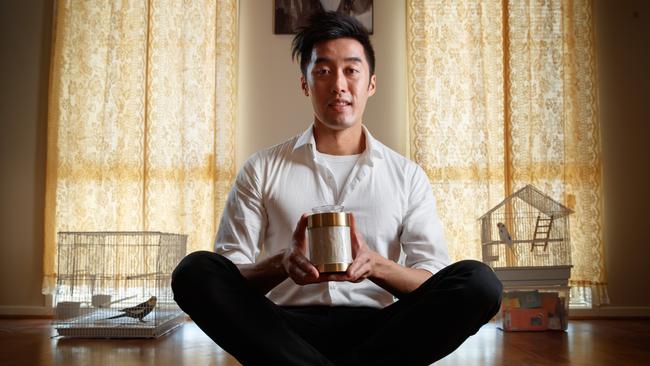
Lam chose the most expensive urn in the range, the cremation and urn costing him $400. “All the others were too small, I felt it kind of diminished the things that she had given us in her own awkward and unique way. It was our way of saying thank you.”
ADOPTING a bearded dragon as part of a cool thematic idea for her new hairdressing salon Gekko, Stefania Nardone, of Auldana, could not have guessed the full impact that José would have on her life as well as upon her hairdressing clients.
While renovating the salon, Nardone and José would spend a lot of time just sitting together and watching TV with José falling asleep in her lap. After that she pronounced him good to be held by clients.
“He would just sit in their lap under the cape while they got their hair done. He was very calm, he was just a pleasant little animal,” says Nardone. When José died suddenly last December, Nardone wanted to cremate him so she could keep him with her in the salon, his home. Nardone was happy to spend the $300 it cost for the cremation of José and his urn.
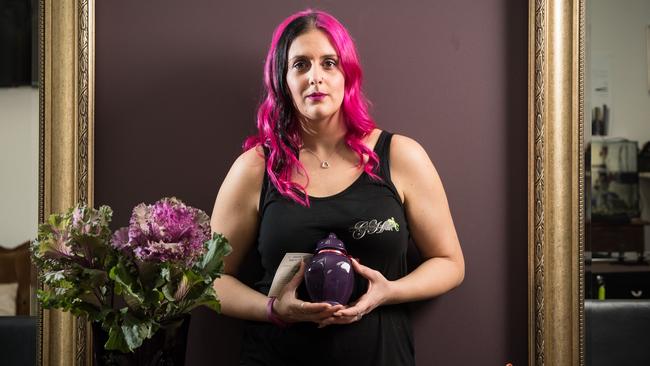
“They are still family,” she says. “I was more upset than I thought I would be. It was a nightmare. I’m still not over it. So far, I have refused to buy another one because that’s his spot. His urn is still here in the salon and my clients still bring me flowers.”
In a world that can be a lonely and impersonal place, our pets are a source of comfort and unconditional love. When we lose them, our grief can be just as real as for the loss of human friends and family.
And while once such grief for our animals would have been dismissed as trivial, today it is embraced.
Kym Henley has a large photo of Matey the sheep on canvas that sits at her bedhead, a birthday present from her daughter, reassurance that no matter what, she would still have Matey close to her.
“Just burying him in the ground wouldn’t have been enough for me,” she says. “To still have him with me is so important and that’s why I’d always do this for our animals.”


